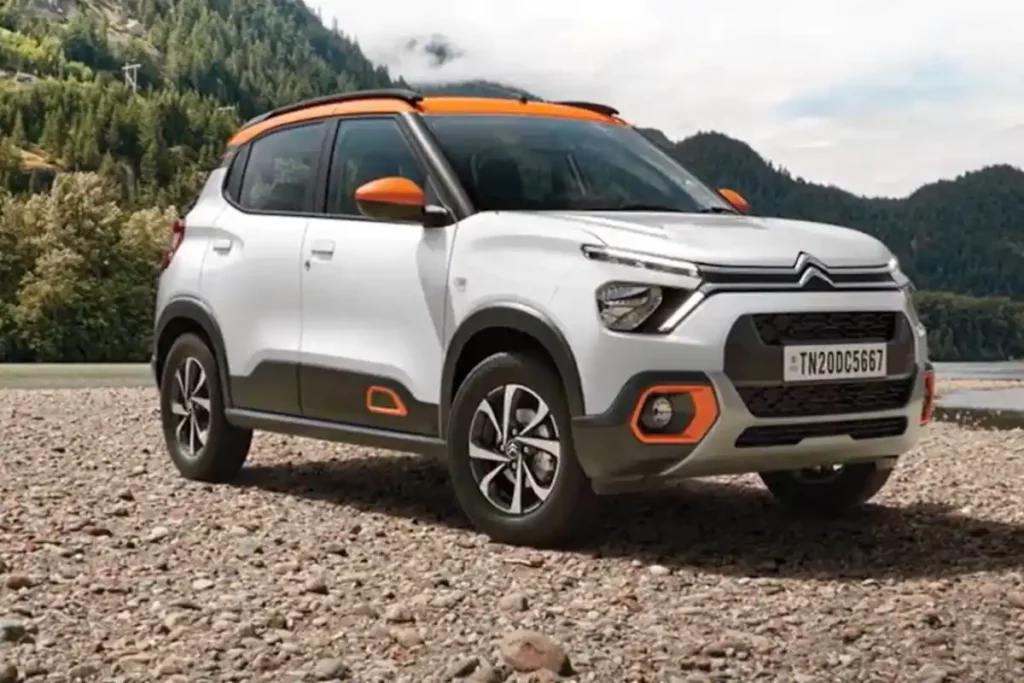Being new to the promising but intensely competitive Citroen understands that competing in the Indian passenger vehicle market won’t be easy in the market for ICE (internal combustion engine) vehicles even with its more than 100-year legacy, here. While it is attempting to amplify its presence in the traditional market area where it now operates, the French automaker sees a better opportunity to introduce the C3 Aircross in October prospects to gain market share in the developing EV industry.
That explains why the automaker introduced the e-C3 in February, barely six months after introducing the C3, its first locally made model, into the electric vehicle (EV) market. Citroen India claims it is in third place in the local market for electric passenger cars with close to 3,000 e-C3s supplied, behind MG Motor India in second place and Tata Motors in first.
“We are completely booked for the next five to six months. Whatever we are manufacturing on the line is already reserved’, Citroen India’s head, Saurabh Vatsa, told ETAuto. Vatsa only stated that the production figures were “significant stuff” without providing any other details. However, some production limitations exist as a result of “constraints” on the supply of specific imported contents.
The e-C3 was introduced in February of this year with a starting price of INR 11.5 lakh (ex-showroom). It is powered by a 29.2 kWh battery pack, which Citroen claims can be rapidly charged continuously without suffering any appreciable degradation often brought on by DC charging. The car has a 320 km driving range that has been ARAI-certified.

Contrasting the demand and sales strategy of Citroen
According to Vatsa, the actual driving distance experienced by B2B operators is roughly 240 kilometres. That means they can operate all day long on a single charge, he explained. Citroen counts on the B2B market to help it increase volumes and a fair market share thanks to the inherent advantages of an EV, such as low operating costs and total cost of ownership (TCO).
The e-C3 was supposed to be the volume driver in the carmaker’s initial strategy to establish itself in the fleet market. When creating the EV model, its India engineering team also considered fleet customers’ opinions.
However, the buyers had other ideas after six months. The initial market reaction has shown to be rather different from the intended strategy. B2C or personal automobile sales have made up 90% of all so far.
Since its inception at the end of February, it has sold 3,000 units, or an average of 600 copies per month through July. The B2B market continues to draw attention. According to Vatsa, there is a sizable demand for the B2B market, and we are working to increase volumes to meet this demand. He continued by saying that B2B buyers for the e-C3 have been located in Mumbai, Bengaluru, Delhi, Hyderabad, and Kolkata.
The Tata Tiago, which debuted on World EV Day in September of last year, is another contender in the hatchback market. Since January of this year, when deliveries started, the business has sold more than 19,000 units of the Tiago EV, which was introduced at a starting price of INR 8.69 lakh (ex-showroom).
It should be mentioned that in 2021, Tata Motors unveiled the XPres-T EV, a first-generation electric sedan with an ex-showroom starting price of INR 9.54 lakh, for use by commercial fleet clients. This was exclusively used for fleet models and was based on the Tigor, which costs INR 12.49 lakh ex-showroom.
Citroen intends to increase its current 44 sales locations to 60 by the time the C3 Aircross is introduced and to 75 by the end of the year. In 2024, a total of 150 outlets are anticipated.
Citroen recorded sales of roughly 9,000 units in 2022–2023 with a market share of less than 1% in India. Citroen India may have a better chance of a greater share in the domestic EV area than in the ICE car market thanks to an early entry in the EV segment with the e-C3, which is anticipated to be followed by an electrified C3 Aircross SUV.
Fiat Chrysler Automobiles and France’s PSA Group merged to create Stellantis in January 2021. In India, Jeep replaced the Fiat brand, and Citroen replaced Peugeot. The 14 car brands in the Stellantis portfolio, which has its headquarters in Amsterdam, include Jeep, Peugeot, Opel, and Maserati.
In April 2021, the Citroen brand of the car manufacturer entered the domestic market with its C5 Aircross SUV. The C3 compact automobile debuted in the petrol version in July 2022, while the electric C3 model debuted in the EV market in February 2023.